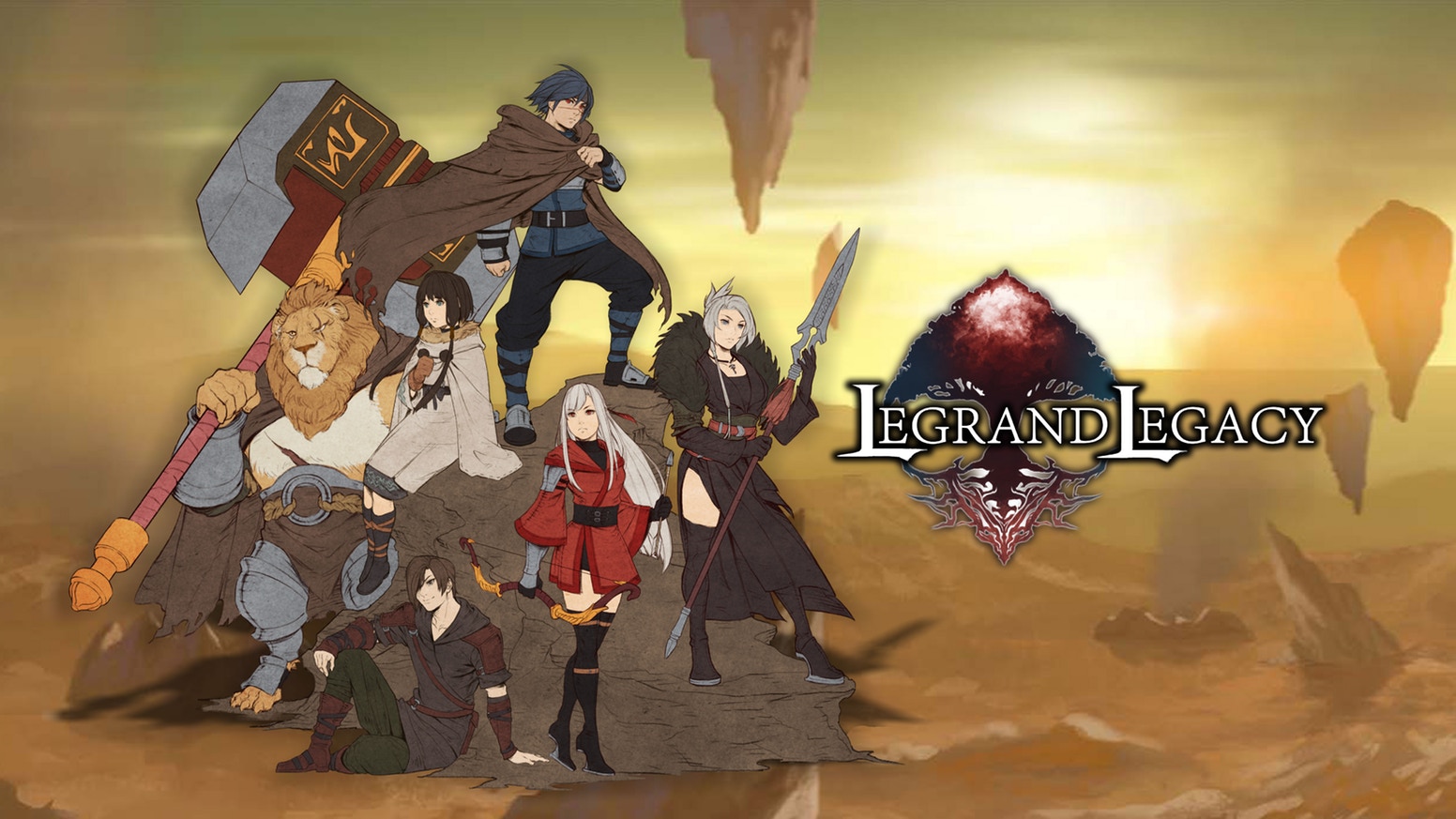Legrand Legacy: Tale of the Fatebounds tries to both recapture the magic of classic JRPGs and also inject fresh new gameplay mechanics to make it feel modern. For a young developer building on only mildly successful Kickstarter campaign, this goal is perhaps a little too ambitious.
The story follows the adventures of Finn, a kind-hearted and somewhat bland protagonist who has lost his memories. He begins his journey as a slave fighting in an arena. Following a fortunate turn of events, he gets set free and finds himself wound up in a quest to save the world. The story follows a generic formula which isn’t particularly interesting or engaging.
Along Finn’s adventure, he links up with a few other characters who join the party. Each of the characters embody one of the stereotypical personalities in JRPGs which isn’t a problem, many of the best characters in JRPGs do. The personalities aren’t however fleshed out in an interesting way and I didn’t find myself taking a liking to any of them.
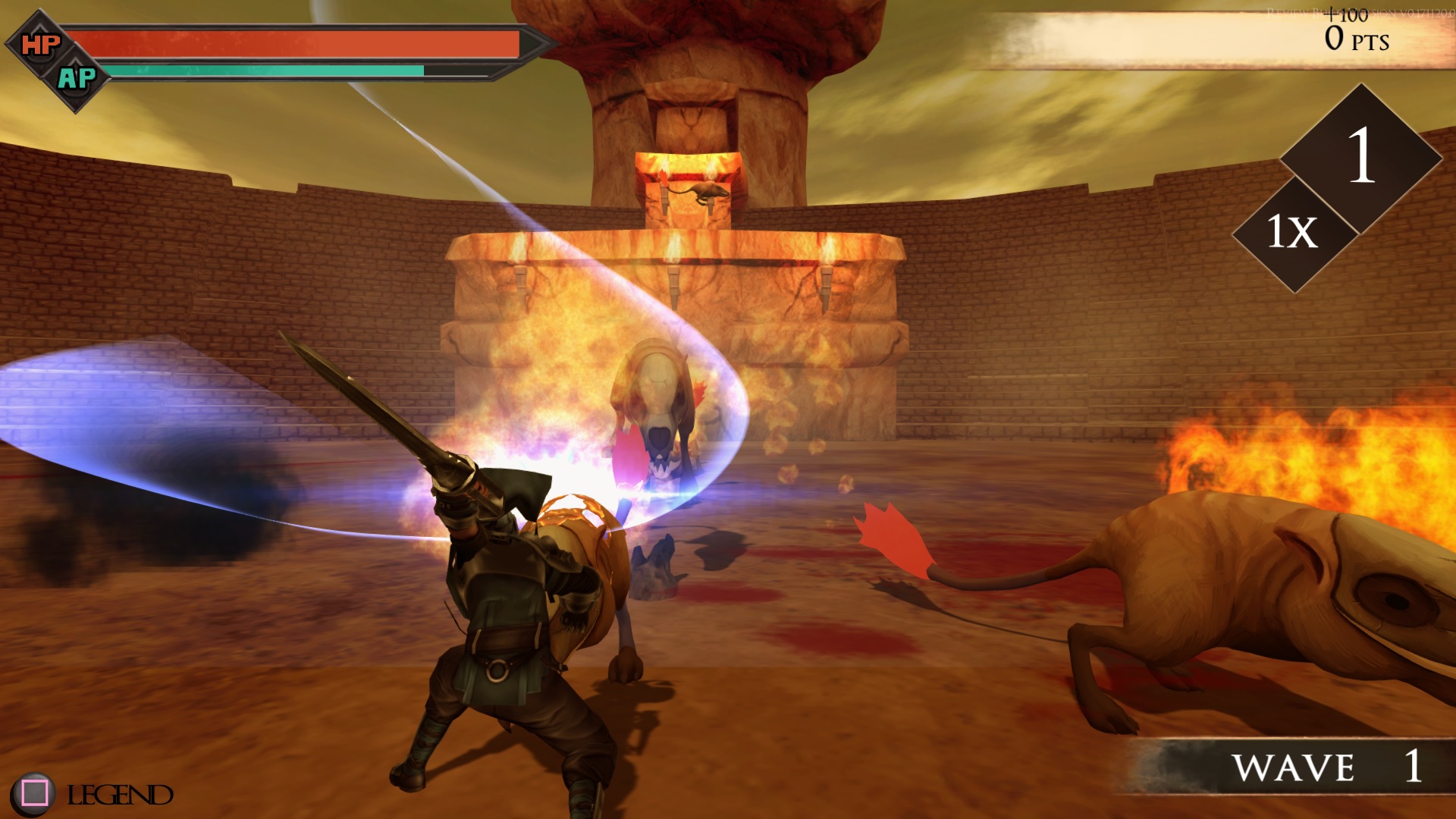
I mainly put this issue down to the writing needing some improvement however I believe part of it also stems from the use of text to convey dialogue rather than voice acting. Full voice acting throughout the entire game may be unrealistic but voice acting for key dialogue and major story moments would go a long way to making character feel like they have more of a personality.
One good thing I would like to say about the dialogue though is that it doesn’t feel drawn out. A frequent problem I have with many JRPGs is that generally there is too much unnecessary dialogue that contributes little to the game. In Legrand Legacy dialogue, particularly random dialogue with NPCs, feels concise.
The story will see you travelling across the world of Legrand, visiting many interesting places along the way. The game utilises gorgeous hand-drawn art as the environment which visually looks fantastic and is one of my favourite aspects of the game.
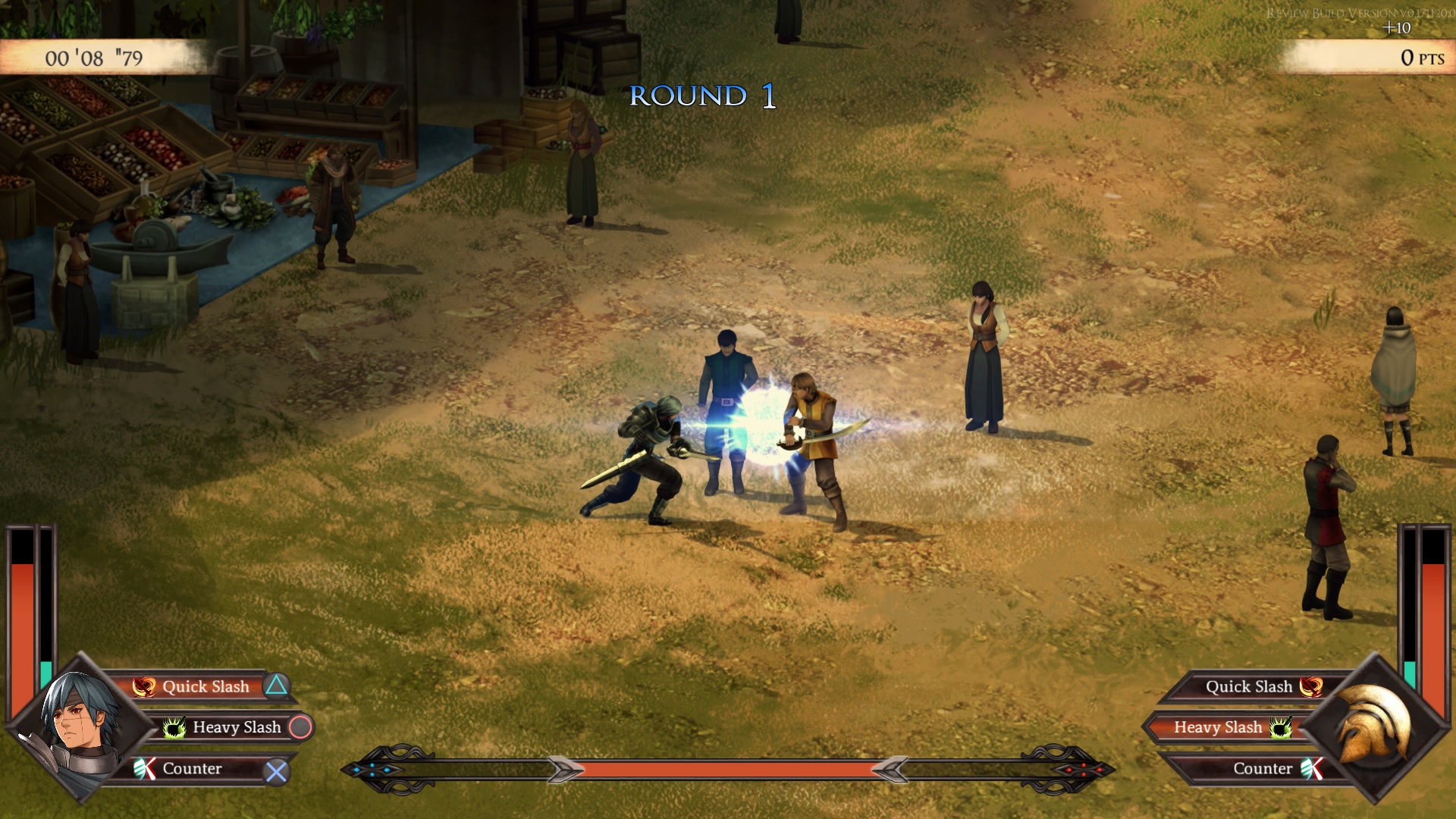
While each area is given an interesting backstory and visual style, I do feel that you are driven through everywhere too quickly and the places just don’t feel alive. I would have liked seeing more of a glimpse into the life of each city, more NPCs going about their business, more side quests to complete and an opportunity to explore. Instead it feels you are constantly shuffled down a tunnel with no room to look anywhere but straight ahead. Each to their own though, if you find RPGs normally feel too padded out, you may just like the pacing of this game.
Combat in the game is turn-based with an interesting time-based twist. Each round, you issue orders to each of your party members participating in the combat. Once issued, everyone begins their action simultaneously. As your party commences their action, a quick time event mini-game pops up whereby you must try and press a certain button at a certain time. How well you time it relates to how effective your action is. As everyone commences their action at the same time, rounds are over and done with very quickly.
Although I liked the idea of the timing mini-game, I would have liked to see more variety. It does get repetitive very quickly and having the same mini-game for every action makes it feel impersonal. Results are too broadly defined into three categories. I found that my results almost exclusively ended in the same ranking each time which made the whole mini-game feel pointless.
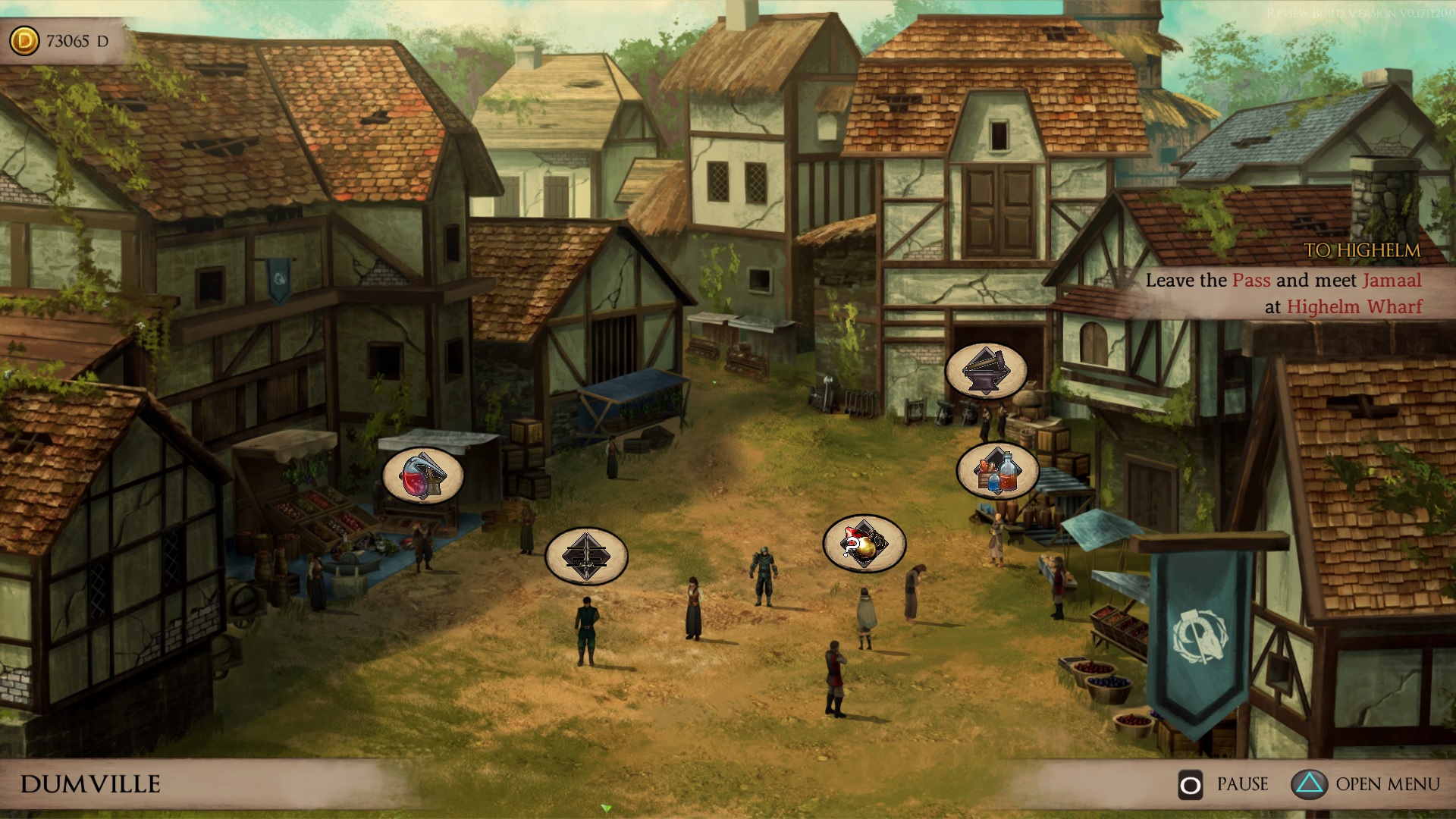
Despite feeling simplistic, the combat has considerable strategic depth.
In addition to your normal elemental weaknesses and resistance, there is also weakness and resistance to different types of attacks. You also have a guard action you can use which in addition to reducing damage you take that round also has a particularly useful additional effect depending on the character. You can’t just waltz into battle and mash attack, you need to work out which character should attack what enemy, who should be using the guard action and ensure your characters are in the correct position on the battlefield.
Outside of this main form of combat, there are other types of mini-games which provided some much-appreciated variety. The main variance is a turn-based tactical warfare system where you move pieces, representing characters and units, around on a map and fight the enemy pieces. This system has a decent amount of strategic depth and is fun to play.
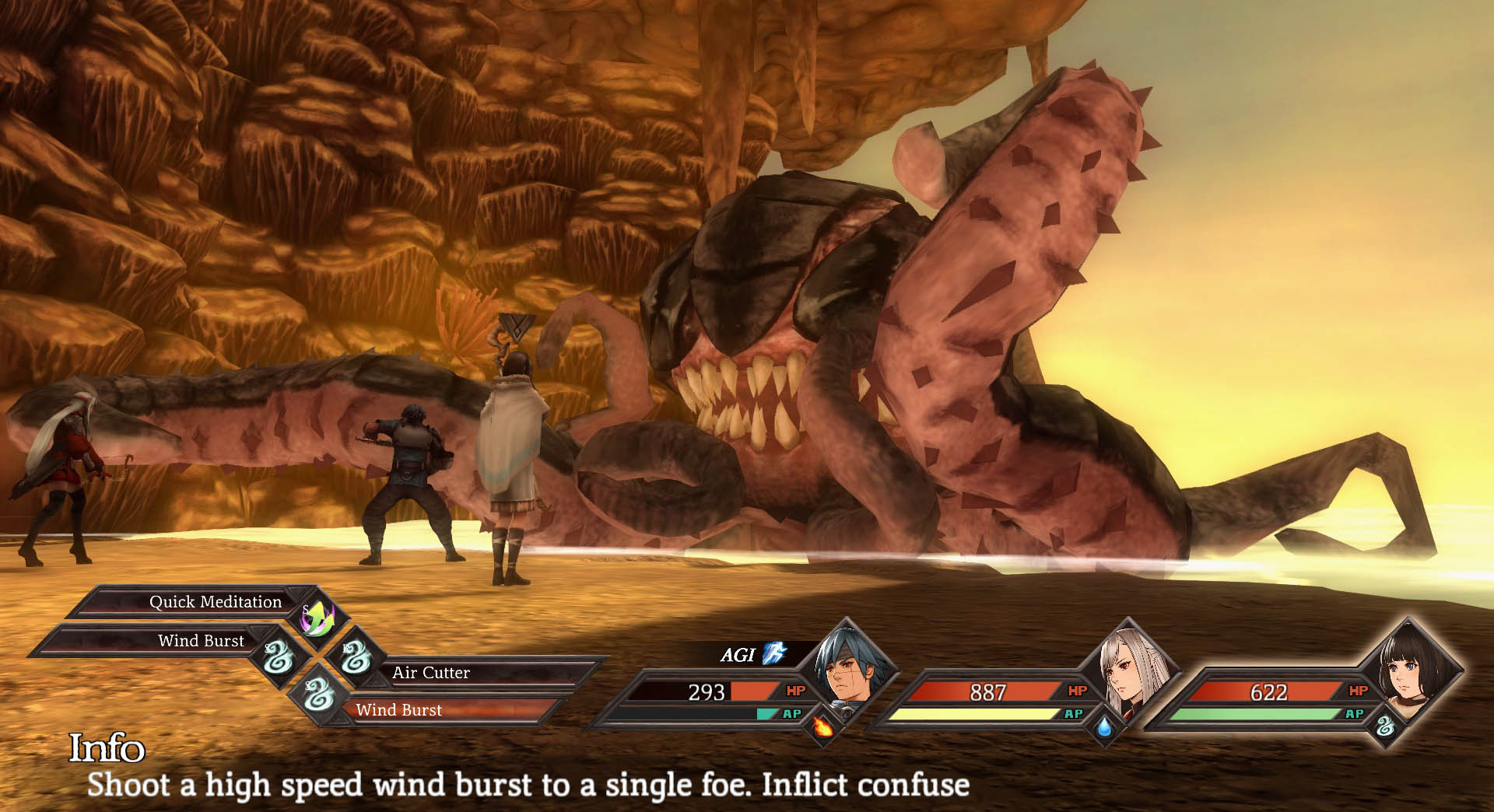
I found character customisation and specialisation to be too restrictive. For this sort of game, I would have liked more choice in the abilities my characters learned and their element type.
Legrand Legacy: Tale of the Fatebounds is a fun yet simplistic RPG that blends elements of old JRPGs with fresh and modern ideas. The characters and story aren’t very interesting and the world isn’t fleshed out in a way that does it justice. The combat utilises a turn-based system that balances strategic depth and pacing very well however character customisation leaves much to be desired. Although this game falls short in several areas, the game does show glimpses of something greater and I look forward to seeing what the developers come up with next.
[rns_reactions]
Released: January 2018 (PC)
Rating: PG
Platforms: PC (Windows 10), (also on PlayStation 4)
Genre: JRPG
Developer: Semisoft
Publisher: Semisoft</p

